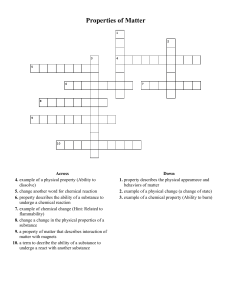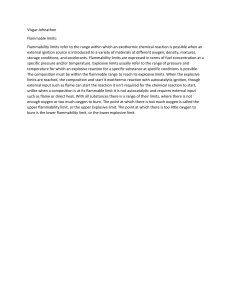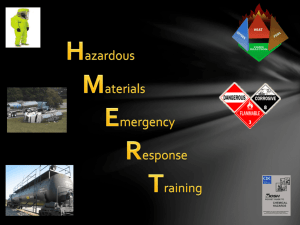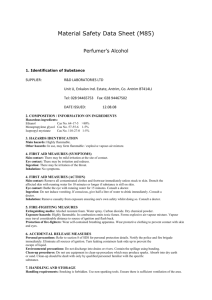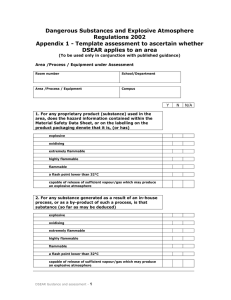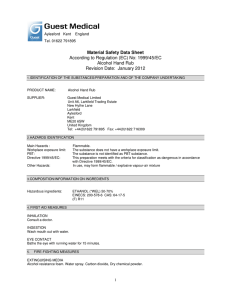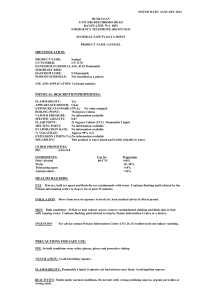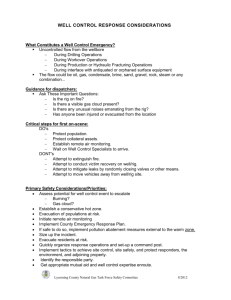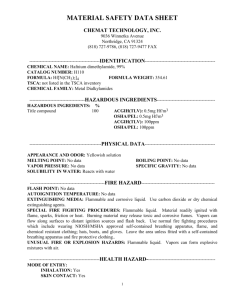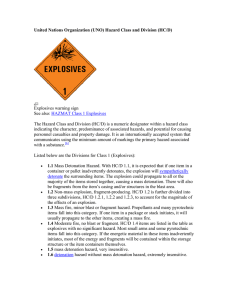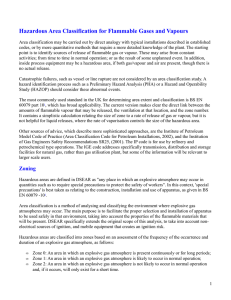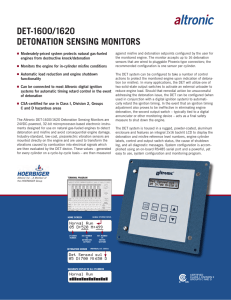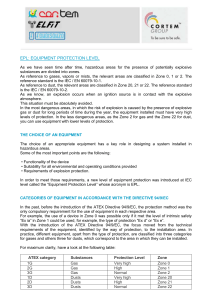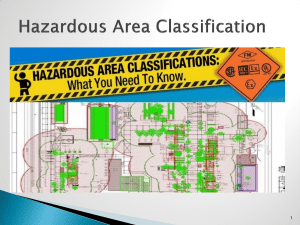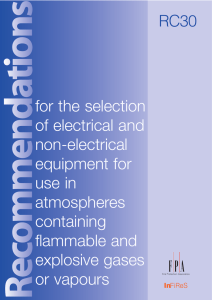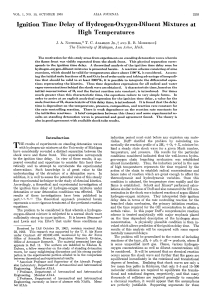ATERIALS HAZARDOUS M STEM IDENTIFICATION SY
advertisement
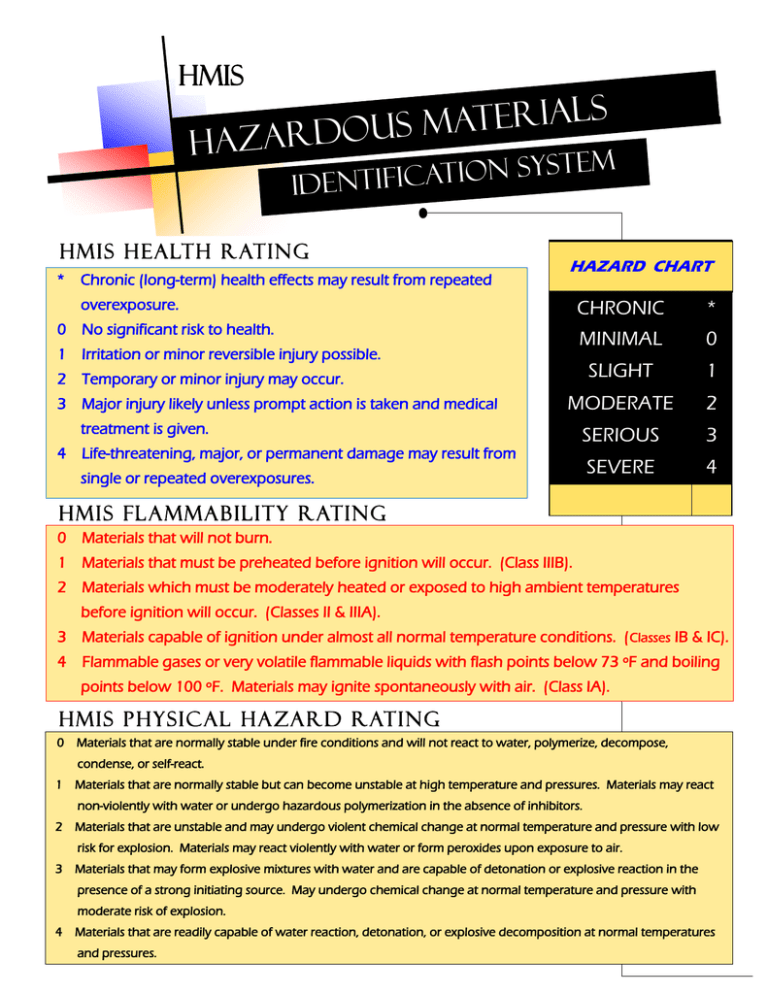
HMIS IALS R E T A M S U HAZARDO YSTEM NS IDENTIFICATIO H M I S H E A LT H R AT I N G * Chronic (long-term) health effects may result from repeated HAZARD CHART overexposure. CHRONIC * MINIMAL 0 SLIGHT 1 MODERATE 2 SERIOUS 3 SEVERE 4 0 No significant risk to health. 1 Irritation or minor reversible injury possible. 2 Temporary or minor injury may occur. 3 Major injury likely unless prompt action is taken and medical treatment is given. 4 Life-threatening, major, or permanent damage may result from single or repeated overexposures. H M I S F L A M M A B I L I T Y R AT I N G 0 Materials that will not burn. 1 Materials that must be preheated before ignition will occur. (Class IIIB). 2 Materials which must be moderately heated or exposed to high ambient temperatures before ignition will occur. (Classes II & IIIA). 3 Materials capable of ignition under almost all normal temperature conditions. ( Classes IB & IC). 4 Flammable gases or very volatile flammable liquids with flash points below 73 ºF and boiling points below 100 ºF. Materials may ignite spontaneously with air. (Class IA). H M I S P H Y S I C A L H A Z A R D R AT I N G 0 Materials that are normally stable under fire conditions and will not react to water, polymerize, decompose, condense, or self-react. 1 Materials that are normally stable but can become unstable at high temperature and pressures. Materials may react non-violently with water or undergo hazardous polymerization in the absence of inhibitors. 2 Materials that are unstable and may undergo violent chemical change at normal temperature and pressure with low risk for explosion. Materials may react violently with water or form peroxides upon exposure to air. 3 Materials that may form explosive mixtures with water and are capable of detonation or explosive reaction in the presence of a strong initiating source. May undergo chemical change at normal temperature and pressure with moderate risk of explosion. 4 Materials that are readily capable of water reaction, detonation, or explosive decomposition at normal temperatures and pressures.
